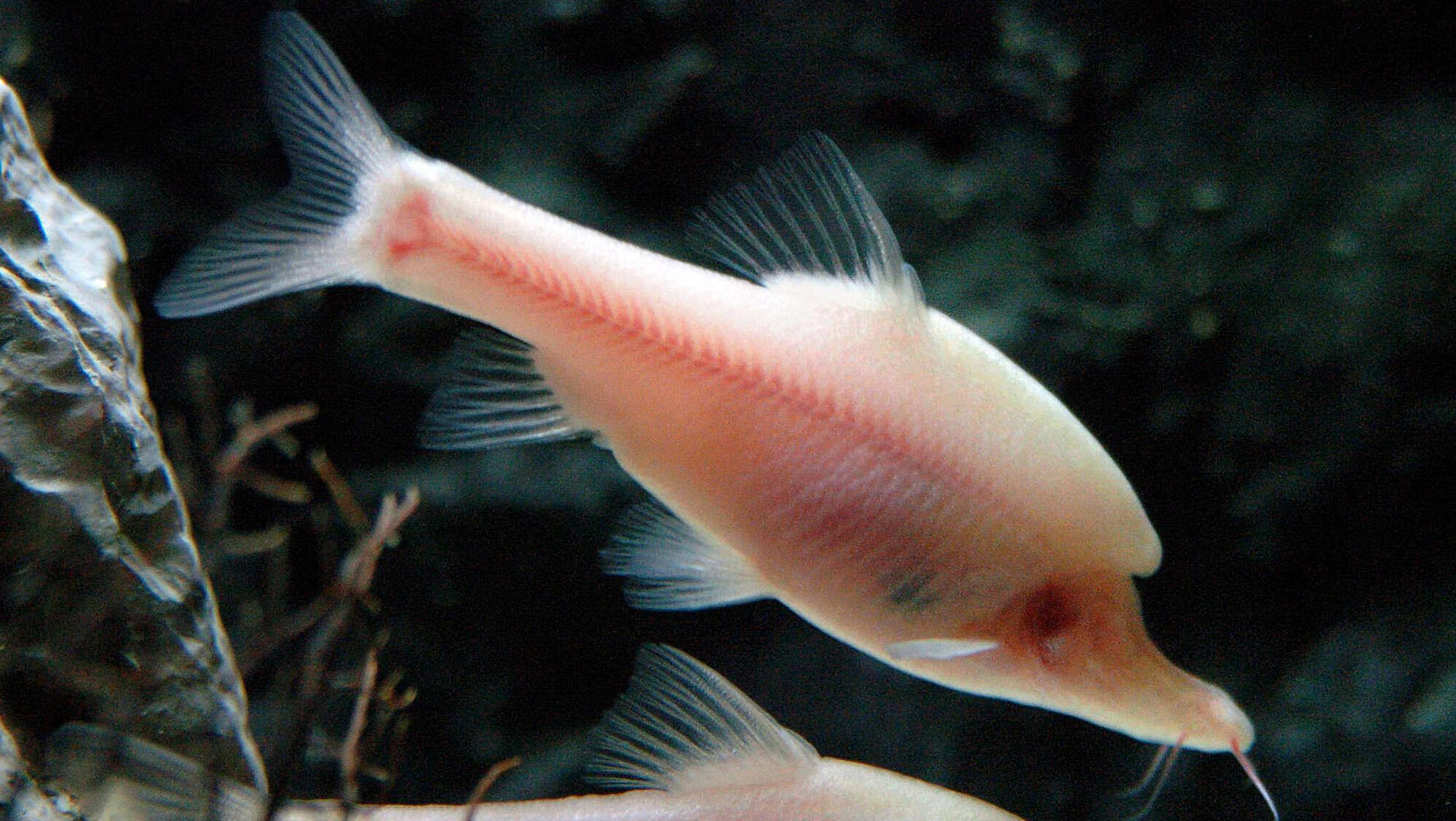

A team of scientists in China have found a unique (and admittedly a little weird) fish inside a pitch black pool in a cave in a mountainous region called the Guizhou province.
In a study published in January in the journal ZooKeys, the team described the newly discovered Sinocyclocheilus longicornus (S. longicornus). The fish have fairly colorless scales due to lack of pigmentation, little eyes that most likely can’t really see anything, and a signature horn jutting out of their foreheads like the mythical unicorn.
[Related: What rockfish genes can teach humans about living past 100.]
S. longicornus belongs to a genus of fish similar to minnows and carps called Sinocyclocheilus that are only found in China. Most of the 76 known Sinocyclocheilus species live within tiny pools cloaked in darkness like S. longicornus, but there are a handful of Sinocyclocheilus species that dwell in brighter waters and don’t have the unusual features that their gloomy cousins have.

Only some of them have these signature horns, that also vary in length and appearance, as some species like S. bicornutus and S. furcodorsalis even have forked horns. Some Sinocyclocheilus species have actually evolved to lose their eyes completely. This process is called regressive evolution, where a species will lose useless features over generations.
This horn is part of what the new species is named after. Longicornus is derived from two Latin words– longus or “long,” and cornu, which means “horn of the forehead.”
S. longicornus is between 4.1 and 5.7 inches long and uses barbels that look like tiny whiskers to feel their way around in the dark. The team is still not sure what the horn-like appendage is used for, but the researchers believe that it might have something to do with navigating their dark and dreary environment, since the species that live in more sunny spots do not have these structures on the top of their heads.
[Related: A primitive part of the zebrafish brain helps them find their way home.]
Most species of Sinocyclocheilus species (including S. longicornus) also have an organ called a lateral line that is made up of sensitive cells that run along their body. This organ can detect changes in water salinity, temperature, and pressure, so a horn wouldn’t be necessary for detecting those environmental factors.
The team believes that the unusually large horn on the S. longicornus, as well as the fact that DNA analysis revealed that it’s not closely related to other long-horned species means that longer horns may have emerged on two separate occasions within the genus. One way to decode that these mysterious horns are actually used for would be to compare S. longicornus’ environmental conditions with other long-horned relatives.
